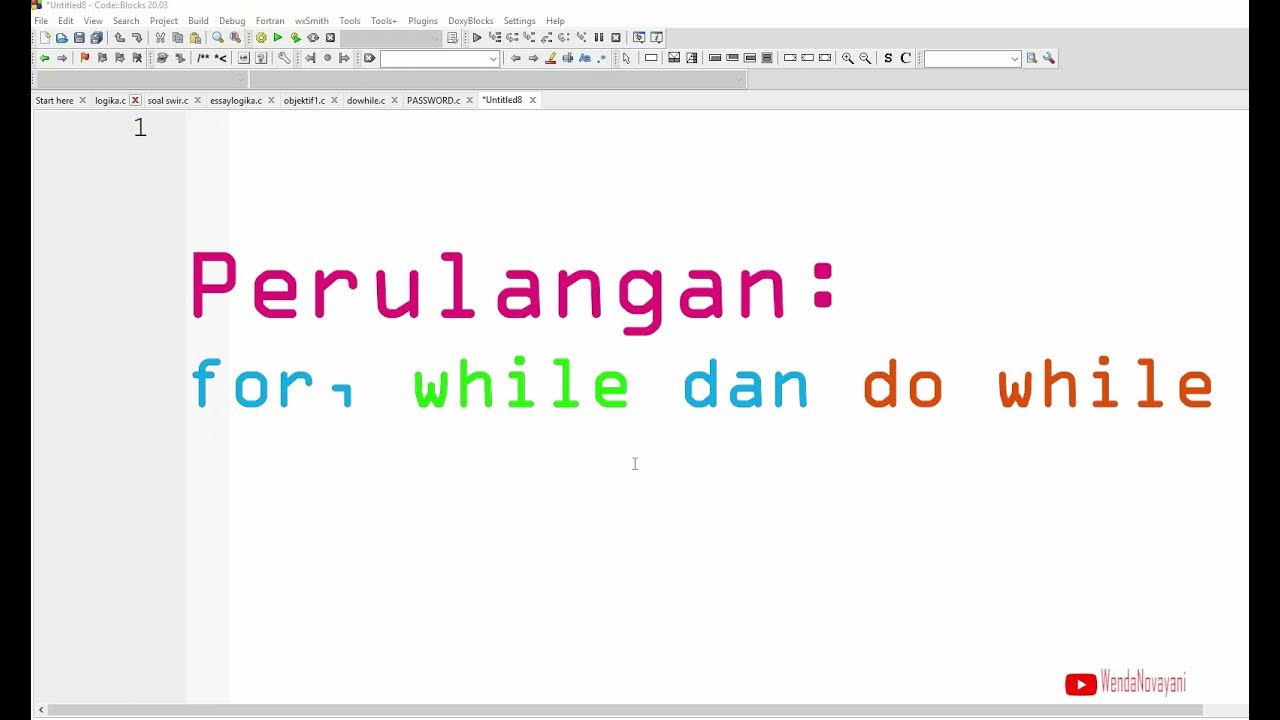do-while Loop
Summary
TLDRThis video tutorial explores the differences between while loops and do-while loops in programming. It emphasizes the structural distinctions, where a while loop checks the condition before execution, resulting in potential no output, while a do-while loop guarantees at least one execution before condition evaluation. Through practical examples, the video illustrates when to use each loop type, highlighting scenarios that require user input and demonstrating how both loops can achieve similar results with different logic flows. By the end, viewers gain clarity on selecting the appropriate loop for their programming needs.
Takeaways
- 😀 A `while` loop checks the condition before executing the loop body, which may result in no output if the condition is false initially.
- 😀 In a `do-while` loop, the body executes at least once before the condition is checked, ensuring output even if the condition fails afterwards.
- 😀 The syntax of a `do-while` loop requires a semicolon after the while statement, which is crucial to avoid errors.
- 😀 A key difference between `while` and `do-while` loops is their execution order in relation to condition checking.
- 😀 `While` loops are preferred when you need to check conditions before executing the loop body.
- 😀 `Do-while` loops are ideal for scenarios where the loop body must run at least once, such as getting user input.
- 😀 An example of a `while` loop used to enter integers demonstrates redundancy in requiring input before condition checking.
- 😀 The `do-while` loop version of the integer entry program eliminates redundancy, directly executing the input prompt.
- 😀 Both loop types can achieve the same result, but the choice of which to use depends on the required flow of execution.
- 😀 Understanding when to use `while` versus `do-while` is essential for efficient programming and avoiding unnecessary code.
Q & A
What is the primary difference between a while loop and a do-while loop?
-The primary difference is that a while loop checks the condition before executing the loop body, while a do-while loop executes the loop body first and checks the condition afterward, ensuring at least one execution of the loop body.
In what scenario would a while loop not execute its body?
-A while loop will not execute its body if the initial condition is false. For example, if the condition checks if a variable is greater than zero and it is initialized to zero, the loop body will not run.
What must be included at the end of a do-while loop syntax?
-A semicolon must be included at the end of the do-while loop syntax after the while condition. This is a crucial part of the syntax that must not be omitted to avoid errors.
Why is it important to execute the loop body at least once in certain programs?
-It's important to execute the loop body at least once when the loop requires user input or some action before evaluating a condition. For instance, prompting a user for input before checking if they entered zero.
How does a do-while loop avoid redundancy compared to a while loop?
-A do-while loop avoids redundancy by allowing the user to enter a value first before checking the condition, eliminating the need to write the input code both before and after the condition check, as seen in the while loop.
What output would be expected when using a while loop if the input is zero initially?
-If the input is zero initially in a while loop, the loop body will not execute, and there will be no output since the condition is false.
What is a common use case for a do-while loop?
-A common use case for a do-while loop is when you want to repeatedly prompt a user for input until they provide a specific value, ensuring that they are asked at least once.
What happens if you forget to include the semicolon in a do-while loop?
-Forgetting to include the semicolon after the while condition in a do-while loop will result in a syntax error, preventing the program from compiling or running correctly.
How does the user input flow differ between the while loop and the do-while loop?
-In a while loop, user input must be gathered before checking the condition; in a do-while loop, the input is collected within the loop body, allowing the condition to be evaluated afterward.
What is the output of both a while loop and a do-while loop if a user enters multiple integers ending with zero?
-Both the while loop and do-while loop will produce the same output if the user enters multiple integers and ends with zero, as both are designed to stop execution when zero is entered.
Outlines

Cette section est réservée aux utilisateurs payants. Améliorez votre compte pour accéder à cette section.
Améliorer maintenantMindmap

Cette section est réservée aux utilisateurs payants. Améliorez votre compte pour accéder à cette section.
Améliorer maintenantKeywords

Cette section est réservée aux utilisateurs payants. Améliorez votre compte pour accéder à cette section.
Améliorer maintenantHighlights

Cette section est réservée aux utilisateurs payants. Améliorez votre compte pour accéder à cette section.
Améliorer maintenantTranscripts

Cette section est réservée aux utilisateurs payants. Améliorez votre compte pour accéder à cette section.
Améliorer maintenantVoir Plus de Vidéos Connexes
5.0 / 5 (0 votes)






